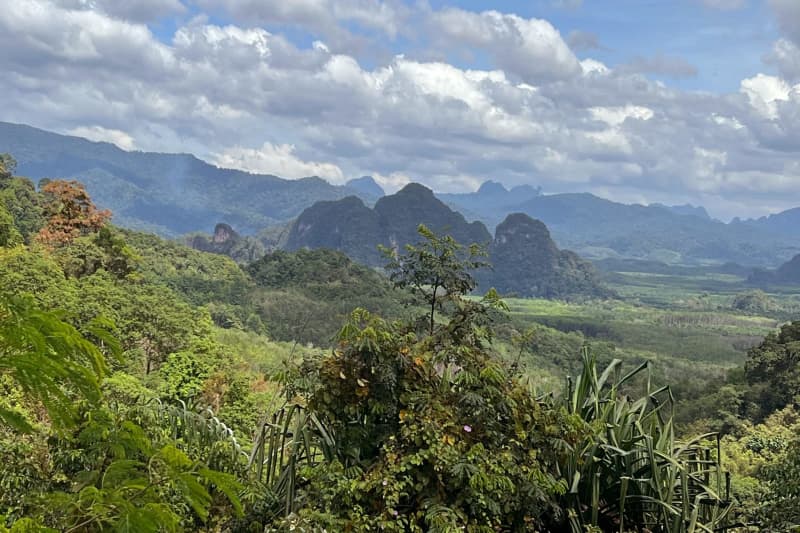The smell of coffee fills the warm, moist tropical air. In front of a cave in the rainforest, some men heated water in a bamboo tube over an open fire and then prepared a jet-black concoction. This is not just for tourists, but is a tradition in the south of Thailand. The drink is also served from cups made of bamboo.
Sipping their coffee, visitors look out at the Sok River, where the rafts they came on float peacefully. Cherry-red dragonflies buzz above the water, an army of ants marches across the sandy ground and high in the tree there is the sound of exotic birds singing away.
One of the oldest rainforests in the world
Welcome to the Khao Sok National Park in the south of Thailand. Its 739 square kilometers are among the most scenic places in the kingdom. “The rainforest in this region is one of the oldest in the world and probably older than the Amazon,” says the park’s website.
Those who explore it by bamboo raft or canoe can hardly cease to be amazed. High limestone cliffs and waterfalls, wild nature and the sound of the jungle – you get the feeling of being far away from civilization.
“Mangrove snake!” the float suddenly shouts as he points to a yellow-black snake wrapped around a branch. The park is home to almost 50 species of mammals, more than 300 bird species and countless bats, reptiles and insects.
So quiet that even the nightclub is empty
Khao Lak is Thailand from a picture book. Yet the beaches have not yet been taken over by mass tourism. It is mainly couples who look for – and find – what they want: relaxation and peace. One such place is Bang Niang Beach with its towering coconut trees. Then there is White Sands Beach, whose name says it all.
“We call Khao Lak ‘Little Thailand’ because here you can find everything that embodies Thai tradition and culture. It is simply authentic,” said Samer Alhaj, manager of the JW Marriott Khao Lak Resort & Spa.
The resort offers a unique attraction: guests can swim in what is billed as the longest swimming pool in Southeast Asia, stretching for a total length of 2.4 kilometers.
“Khao Lak is for those who really want to relax,” says Thing, a travel guide for the Khaolak Vista tourism company who, as is often the case here, identifies himself only by his first name. “There’s only one nightclub in the area and it’s always empty.”
A successful recovery attempt after the tsunami
The name Khao Lak is also linked to one of the darkest moments in recent human history: the catastrophic tsunami of December 26, 2004 that hit the coastal states of the Indian Ocean. There was hardly a region in Thailand that was more affected than Khao Lak. Thousands of people – both locals and tourists – were killed. Almost the entire area was destroyed.
Today, the Ban Nam Khem Tsunami Memorial Park commemorates the tragic loss of life and the grief of the bereaved. There are photos and floral decorations everywhere, memories of the dead, on blue and white tiles.
“Everyone here helped so that Khao Lak could be brought back to life,” says Thing. Today there is no sign of the devastation and destruction. But to ensure such a catastrophe cannot repeat itself, authorities have set up emergency systems, signposted evacuation routes and high concrete tsunami shelters along the coast.
Together, instead of alone, in the island world
Thing drove the group to the historic center of Takua Pa, 30 kilometers northeast of Khao Lak. In the 19th century, tin mining flourished here, attracting merchants from China, England and Portugal. Pastel-colored buildings in Sino-Portuguese architecture, but also shrines and small temples, Chinese lanterns and arcades remind us of that period.
Khao Lak is also the gateway to its own world of islands. From here there are day excursions and diving safaris to the Similan Islands and the more remote Surin Islands. But to help protect the natural environment, both archipelagos are closed to visitors during the rainy season from May to October. And only a few of the Similan Islands are open to visitors, which in high season can often mean the white-sand beaches are a magnet for dozens of tour boats.
That’s when a visitor isn’t alone – but for the small number of other tourists you see together, the spectacular granite formations and bays can hardly be surpassed for their beauty.

